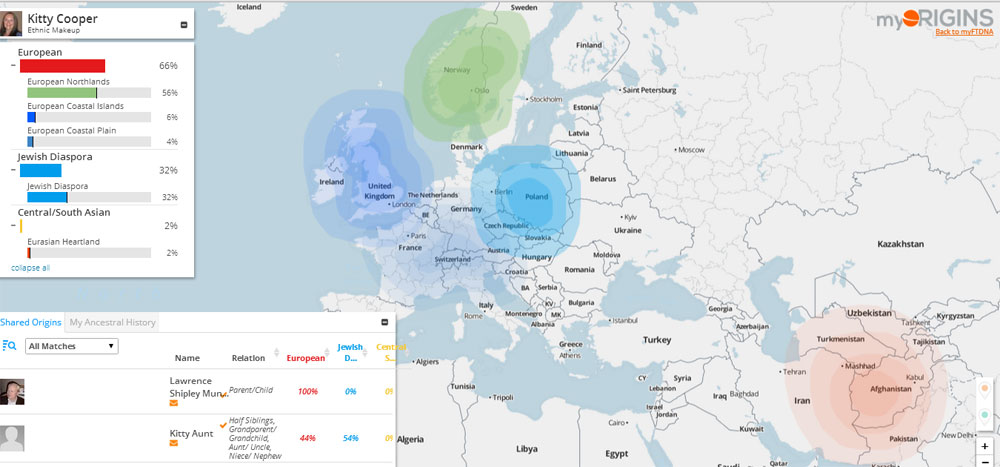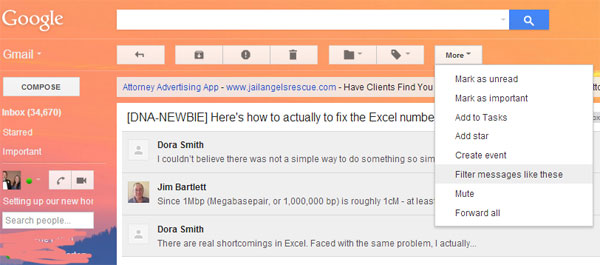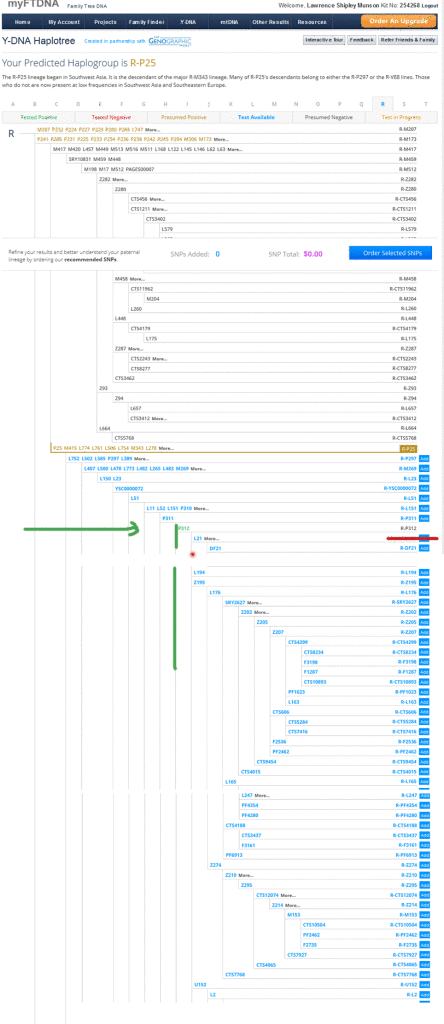 Someone recently posed the question “How many ancestors did I have 1000 years ago?” in conjunction with the assumption that the various genetic origins programs include about 1000 years worth of ancestry … my answer, of the billion possible maybe a million, maybe far fewer …
Someone recently posed the question “How many ancestors did I have 1000 years ago?” in conjunction with the assumption that the various genetic origins programs include about 1000 years worth of ancestry … my answer, of the billion possible maybe a million, maybe far fewer …
Very simply, if you postulate that 1000 years was 30 generations ago then your theoretical number of ancestors is two to the 30th, or just over a billion: 1,073,741,824. This is impossible as nowhere near that many people were alive back then. Plus not everyone who lived a thousand years ago has descendants today. So your ancestors must be duplicated numerous times on your family tree; this is known as pedigree collapse. Brian Pears points out in his article The Ancestor Paradox, that “even if every marriage in every generation was between second cousins, a quite unbelievable situation, we would still run out of people to be our ancestors within 29 generations.”
Kenneth W. Wachter came up with an interesting mathematical model for this, described in Stephen Lewis’ blog post How many ancestors do I have. To somewhat paraphrase, “Going back 30 generations… Wachter’s model calculates that [an Englishman] would have 952,279 distinct ancestors in 1077 – only around 0.09% of the maximum but representing fully 86% of the total estimated English population [at that time] of 1.1 million.”
More recently (1999), Yale statistician Joseph Chang wrote a paper analyzing pedigree collapse that postulated that we Europeans all have a common ancestor who lived in about 1400 AD. Warning, that paper has lots of math in it.


